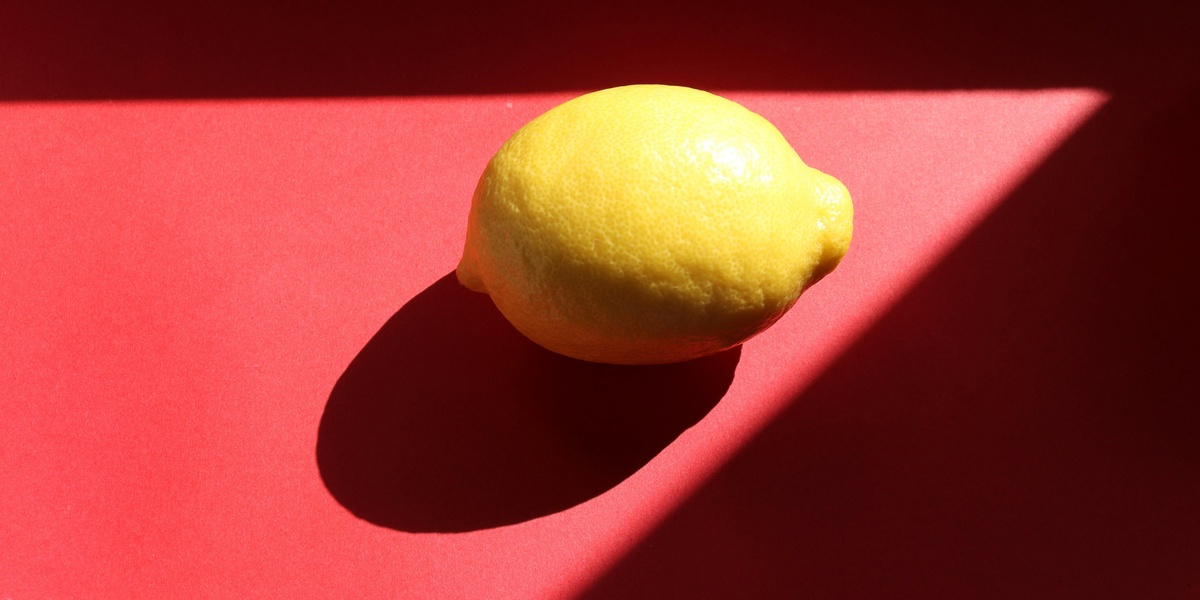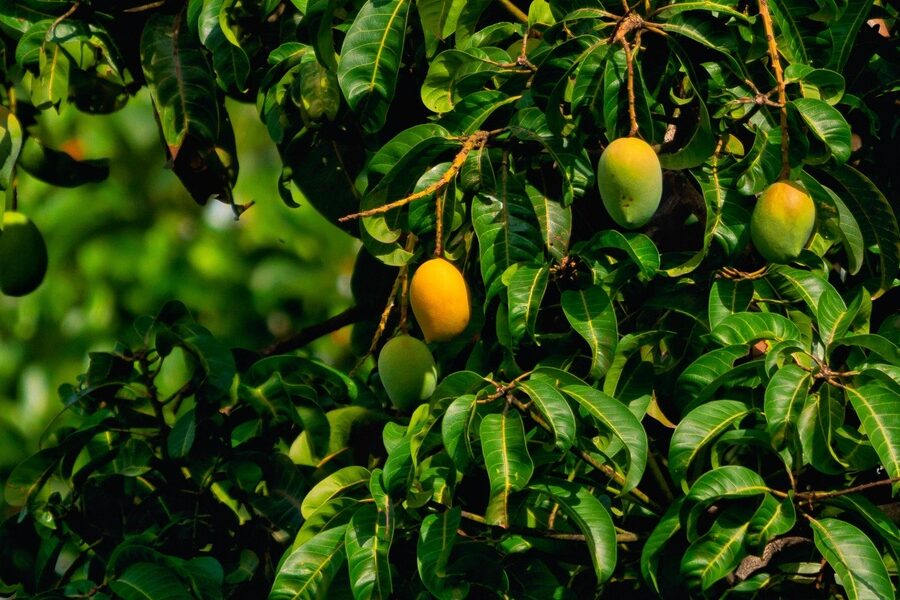Italy’s varied landscapes—from Sicilian citrus groves to alpine orchards—shape a rich fruit culture that’s woven into Italian cooking and daily life. Small farms, regional traditions, and different microclimates mean many varieties thrive in surprisingly local pockets.
There are 56 Fruits of Italy, ranging from Almond to White Currant. For each entry I list Scientific name, Main region(s), Peak season (months); details you’ll find below.
When are most Italian fruits at their best?
Peak times vary by region and altitude: coastal and southern areas ripen earlier (spring–summer) while mountain and northern varieties often peak later (summer–autumn). Use the Peak season (months) column to match fruit to travel plans or recipes and aim for local markets during those months for best flavor.
How do Scientific name and region info help when buying or researching?
Scientific names reduce confusion between local nicknames and lookalike varieties, and region notes point to where a fruit is traditionally grown. Together with peak-season months, they help you identify authentic varieties, ask vendors the right questions, and choose the freshest produce.
Fruits of Italy
| Name | Scientific name | Main region(s) | Peak season (months) |
|---|---|---|---|
| Apple | Malus domestica | Trentino-Alto Adige, Veneto | Aug–Nov |
| Pear | Pyrus communis | Emilia-Romagna, Veneto | Aug–Oct |
| Peach | Prunus persica | Emilia-Romagna, Campania, Veneto | Jun–Sep |
| Nectarine | Prunus persica var. nucipersica | Emilia-Romagna, Campania | Jun–Sep |
| Apricot | Prunus armeniaca | Campania, Emilia-Romagna | Jun–Jul |
| Plum | Prunus domestica | Emilia-Romagna, Trentino | Jul–Sep |
| Cherry | Prunus avium | Puglia, Veneto, Emilia-Romagna | May–Jul |
| Sour Cherry | Prunus cerasus | Emilia-Romagna, Marche | Jun–Jul |
| Lemon | Citrus limon | Sicily, Campania | All year (peaks Nov–May) |
| Orange | Citrus × sinensis | Sicily, Calabria | Nov–May |
| Blood Orange | Citrus × sinensis | Sicily | Dec–Apr |
| Bergamot Orange | Citrus bergamia | Calabria | Nov–Mar |
| Mandarin Orange | Citrus reticulata | Sicily, Calabria | Nov–Feb |
| Clementine | Citrus × clementina | Calabria, Puglia, Sicily | Nov–Feb |
| Citron | Citrus medica | Calabria, Sicily | Oct–Jan |
| Chinotto | Citrus myrtifolia | Liguria, Sicily | Sep–Nov |
| Fig | Ficus carica | Puglia, Campania, Calabria | Jun–Sep |
| Grape | Vitis vinifera | All regions | Aug–Oct |
| Strawberry | Fragaria × ananassa | Campania, Basilicata, Veneto | Mar–Jun |
| Prickly Pear | Opuntia ficus-indica | Sicily, Sardinia, Calabria | Aug–Nov |
| Kiwi | Actinidia deliciosa | Lazio, Piedmont, Emilia-Romagna | Oct–May |
| Persimmon | Diospyros kaki | Emilia-Romagna, Campania, Sicily | Oct–Dec |
| Pomegranate | Punica granatum | Puglia, Sicily, Lazio | Sep–Nov |
| Melon | Cucumis melo | Lombardy, Sicily, Emilia-Romagna | Jun–Sep |
| Watermelon | Citrullus lanatus | Emilia-Romagna, Lazio, Lombardy | Jun–Aug |
| Olive | Olea europaea | Puglia, Calabria, Sicily | Oct–Dec |
| Chestnut | Castanea sativa | Tuscany, Piedmont, Campania | Oct–Nov |
| Hazelnut | Corylus avellana | Piedmont, Lazio, Campania | Aug–Sep |
| Walnut | Juglans regia | Campania, Veneto | Sep–Oct |
| Almond | Prunus dulcis | Sicily, Puglia | Aug–Sep |
| Pistachio | Pistacia vera | Sicily | Sep |
| Quince | Cydonia oblonga | Sicily, Campania | Sep–Oct |
| Medlar | Mespilus germanica | Piedmont, Lombardy | Nov–Dec |
| Loquat | Eriobotrya japonica | Sicily, Liguria | Apr–May |
| Jujube | Ziziphus jujuba | Veneto, Emilia-Romagna | Sep–Oct |
| Mulberry | Morus nigra | Sicily, Campania | May–Jun |
| Cornelian Cherry | Cornus mas | Veneto, Emilia-Romagna | Aug–Sep |
| Blackberry | Rubus fruticosus | Trentino-Alto Adige, Piedmont | Jul–Aug |
| Raspberry | Rubus idaeus | Trentino-Alto Adige, Veneto | Jun–Sep |
| Blueberry | Vaccinium corymbosum | Piedmont, Trentino-Alto Adige | Jun–Aug |
| Red Currant | Ribes rubrum | Trentino-Alto Adige | Jun–Jul |
| White Currant | Ribes sativum | Trentino-Alto Adige | Jun–Jul |
| Gooseberry | Ribes uva-crispa | Trentino-Alto Adige, Piedmont | Jun–Jul |
| Tomato | Solanum lycopersicum | Campania, Emilia-Romagna, Sicily | Jun–Sep |
| Avocado | Persea americana | Sicily, Calabria | Oct–May |
| Carob | Ceratonia siliqua | Sicily, Puglia | Aug–Sep |
| Strawberry Tree Fruit | Arbutus unedo | Sardinia, Liguria | Oct–Dec |
| Sloe | Prunus spinosa | Widespread wild | Oct–Nov |
| Rose Hip | Rosa canina | Widespread wild | Sep–Nov |
| Elderberry | Sambucus nigra | Widespread wild | Aug–Sep |
| Saturn Peach | Prunus persica var. platycarpa | Sicily, Marche | Jun–Aug |
| Annurca Apple | Malus domestica ‘Annurca’ | Campania | Oct–Nov |
| Azarole | Crataegus azarolus | Sicily, Liguria | Sep |
| Service Tree Berry | Sorbus domestica | Widespread | Sep–Oct |
| Italian Stone Pine | Pinus pinea | Tuscany, Lazio | Oct–Apr |
| Feijoa | Acca sellowiana | Liguria, Sicily | Oct–Nov |
Images and Descriptions
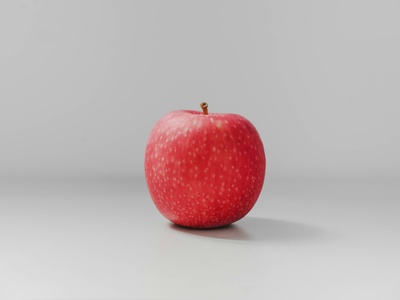
Apple
Essential to Northern Italian cuisine. Varieties like Golden Delicious and Renetta from the Mela Val di Non DOP are prized. Used in strudel, cakes, or eaten fresh.
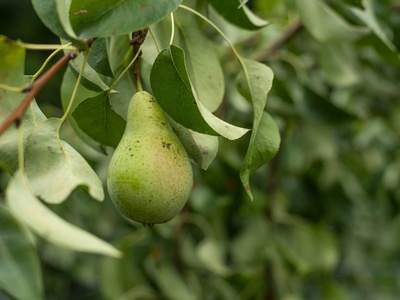
Pear
Emilia-Romagna is famous for its Pera dell’Emilia-Romagna IGP. Varieties like Abate Fetel are perfect for eating fresh, in salads with cheese, or baked into tarts.
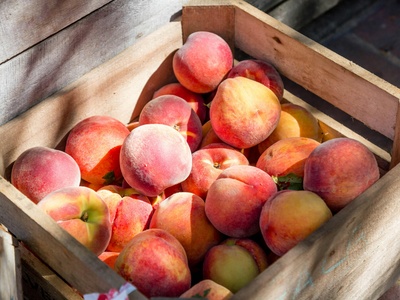
Peach
A beloved summer fruit. The Pesca di Verona IGP and Pesca Nettarina di Romagna IGP are notable protected varieties. Perfect for eating fresh, grilling, or in Bellinis.
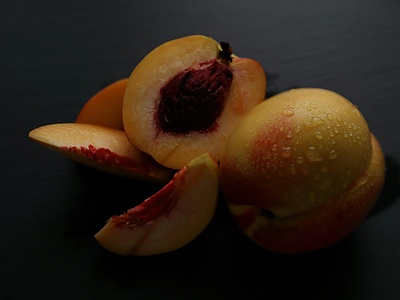
Nectarine
A smooth-skinned variety of peach. The Pesca Nettarina di Romagna IGP is a protected variety, celebrated for its sweet, juicy flesh and vibrant color.

Apricot
Known for their velvety skin and delicate flavor. The Vesuvius apricot (‘Albicocca Vesuviana’) is particularly prized. Used in jams, tarts, and eaten fresh from the tree.
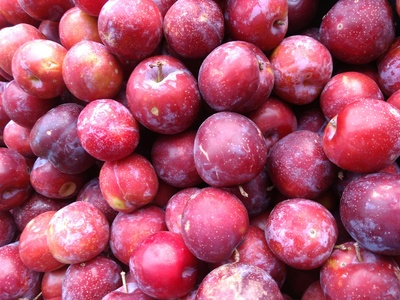
Plum
Comes in many varieties, from sweet to tart. The Susina di Dro DOP is a famous plum from Trentino. Often eaten fresh, dried into prunes, or made into delicious jam.

Cherry
A cherished sign of early summer. The Ciliegia di Marostica IGP and Ciliegia di Vignola IGP are famous protected varieties. Eaten fresh or used in liqueurs and desserts.
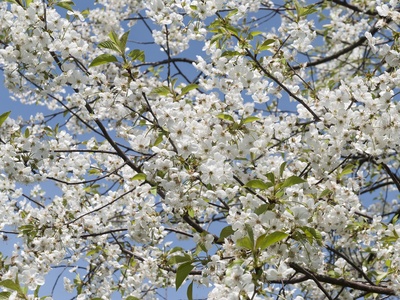
Sour Cherry
Tart cherries (‘amarene’ or ‘visciole’) are prized for processing. They are the star of jams, syrups like the famous Amarena, and liqueurs, providing a tang to sweet dishes.

Lemon
Iconic Italian fruit. Limone di Sorrento IGP and Limone di Siracusa IGP are world-famous for their intense aroma, used to make limoncello, granita, and in countless dishes.
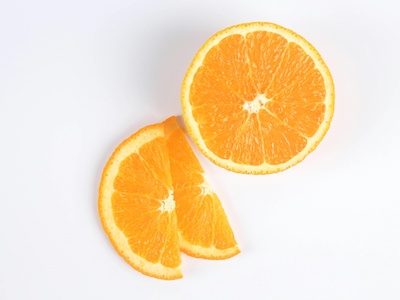
Orange
Italy is famous for its sweet oranges. The Arancia di Ribera DOP is a juicy, seedless navel orange perfect for eating fresh. Also used in salads, desserts, and marmalades.
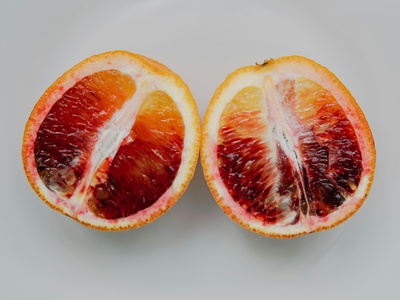
Blood Orange
A variety of orange with crimson flesh. The Arancia Rossa di Sicilia IGP (Tarocco, Moro, Sanguinello varieties) is celebrated for its unique flavor profile, rich in antioxidants.

Bergamot Orange
A fragrant citrus prized for its essential oil, famously used in Earl Grey tea and perfumes. The Bergamotto di Reggio Calabria DOP grows almost exclusively in this region.
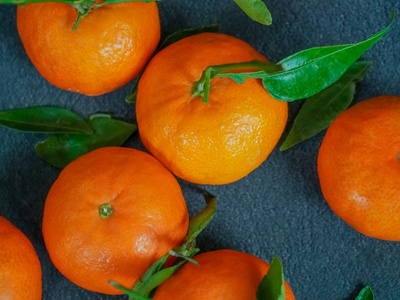
Mandarin Orange
Smaller and sweeter than oranges, with a peel that is easy to remove. The late-season Mandarino Tardivo di Ciaculli is a Slow Food Presidium from Palermo, known for its intense sweetness.

Clementine
A hybrid of mandarin and sweet orange, seedless and easy to peel. Clementine di Calabria IGP and Clementine del Golfo di Taranto IGP are prized for their balance of sweetness and acidity.

Citron
A large, fragrant citrus with a very thick pith. The Cedro di Santa Maria del Rivolo from Calabria is famous. The peel is typically candied or used for its essential oils.

Chinotto
A small, bitter orange-like citrus. The Chinotto di Savona is a Slow Food Presidium, famed for its use in the iconic Italian soft drink of the same name, as well as in preserves.

Fig
An ancient fruit with a sweet, honeyed taste. The Fico Bianco del Cilento DOP is a prized variety. Eaten fresh with prosciutto or cheese, dried, or made into jam.
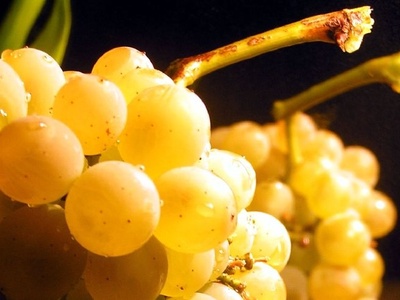
Grape
While primarily grown for wine, table grapes (uva da tavola) are a staple. Uva di Puglia IGP and Uva da Tavola di Canicattì IGP are renowned for their crisp, sweet berries.
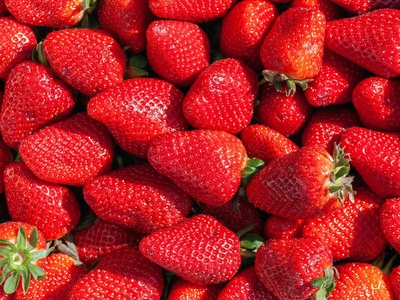
Strawberry
A symbol of spring. The Fragola di Tortona and Fragola di Basilicata IGP are known for their fragrance and sweetness. Perfect in risotto, with balsamic vinegar, or in gelato.
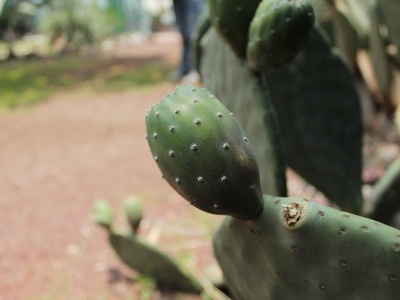
Prickly Pear
The fruit of a cactus, also known as ‘fico d’India’. The Ficodindia dell’Etna DOP from Sicily is famous for its vibrant color and sweet, juicy flesh studded with edible seeds.

Kiwi
Italy is a leading global producer. The Kiwi Latina IGP is known for its high quality. The green, tangy flesh is rich in vitamin C and eaten fresh or in fruit salads.

Persimmon
A sweet, honey-like autumn fruit. The ‘Loto di Romagna’ and astringent ‘Kaki Tipo’ are popular varieties. Eaten soft like pudding or firm and crisp like an apple.
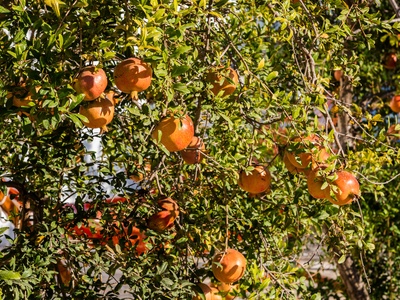
Pomegranate
Known for its jewel-like seeds (arils) bursting with tart juice. Cultivation is growing, especially in the south. Used in salads, juices, and as a garnish for savory dishes.
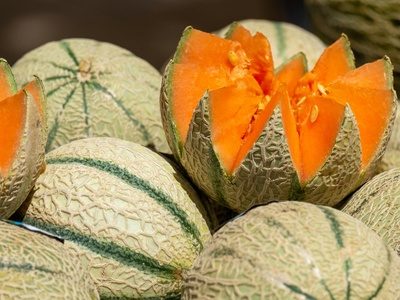
Melon
Cantaloupe-style melons are a summer classic. The Melone Mantovano IGP is prized for its fragrance and sweetness. Famously served wrapped in prosciutto as an appetizer.
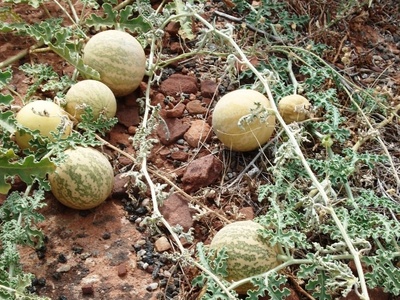
Watermelon
The ultimate refreshing summer fruit, called ‘cocomero’ or ‘anguria’. The Anguria Reggiana IGP is known for its sweetness. Often eaten in simple slices or used for ‘granita’.

Olive
Botanically a fruit, the olive is a cornerstone of Italian cuisine. Prized table varieties include Oliva di Gaeta DOP and La Bella della Daunia DOP. Cured and eaten as an appetizer.

Chestnut
A quintessential autumn treat. Many protected varieties exist, such as Marrone di Castel del Rio IGP and Castagna di Montella IGP. Roasted, boiled, or milled into flour.
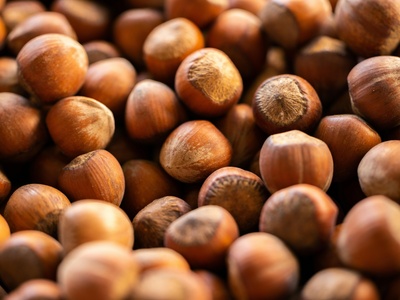
Hazelnut
A key ingredient in Italian pastry. The Nocciola del Piemonte IGP and Nocciola Romana DOP are world-renowned for their intense flavor, essential for gianduja and other sweets.
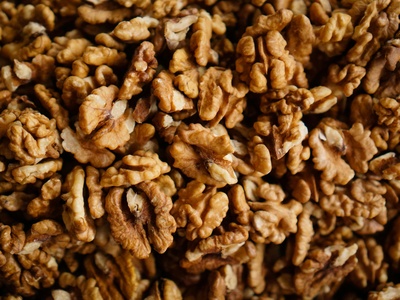
Walnut
Valued for its flavorful kernel. The Noce di Sorrento IGP from Campania is a notable variety. Used in cakes, pesto-like sauces (‘salsa di noci’), and eaten fresh.
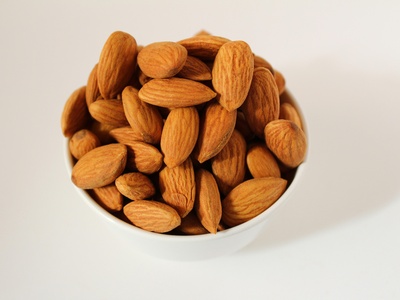
Almond
A staple of Southern Italian desserts. The Mandorla di Avola from Sicily is globally famous for its delicate flavor, used in confetti, marzipan, and granita.
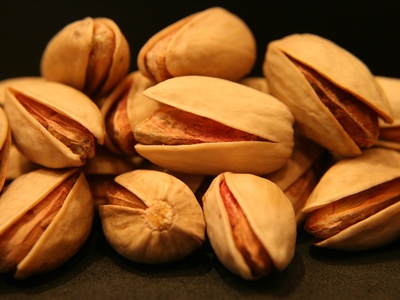
Pistachio
The Pistacchio Verde di Bronte DOP, grown on the slopes of Mount Etna, is called “green gold”. It has a unique, intense flavor and is used in everything from gelato to pesto.
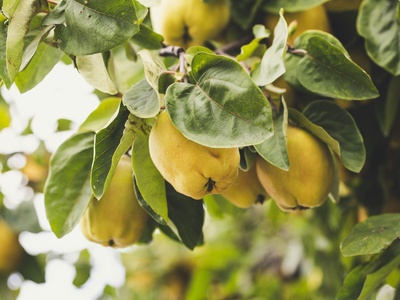
Quince
An ancient, aromatic pome fruit that is too hard and astringent to eat raw. Cooked, it transforms into a fragrant, pink jelly or paste (‘cotognata’), often served with cheese.
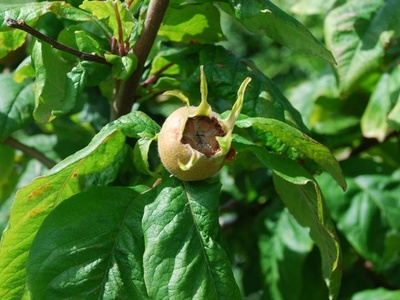
Medlar
An old-fashioned fruit that must be “bletted” or over-ripened to become edible. It develops a soft texture and a flavor reminiscent of apple butter or spiced applesauce.

Loquat
Known as ‘nespola’ in Italy, this small, yellow-orange fruit signals the arrival of spring. It has a sweet-tart flavor, often compared to a mix of citrus, peach, and mango.
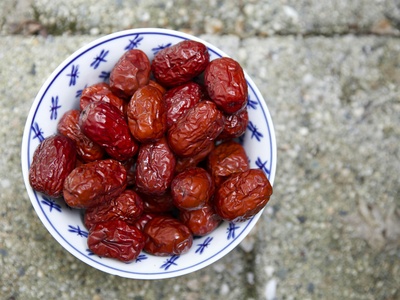
Jujube
A small, reddish-brown fruit also called ‘giuggiola’. When fresh, it tastes like a crisp, sweet apple; when dried, it resembles a date. Used to make ‘brodo di giuggiole’ liqueur.
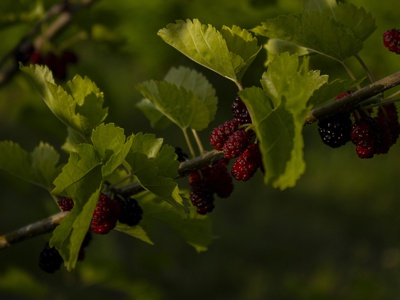
Mulberry
A delicate, sweet-tart berry that stains everything it touches. Historically grown for silkworms, the fruit (‘gelso’) is now used to make delicious granita and jams in the south.
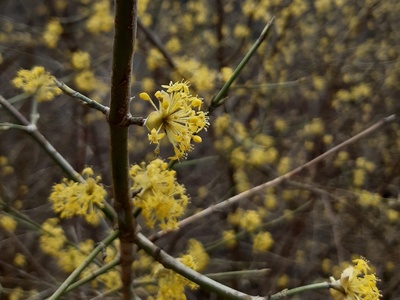
Cornelian Cherry
A small, tart, oblong red fruit from the dogwood family, called ‘corniolo’. Too sour to eat raw, it’s typically made into jams, sauces for meats, or traditional liqueurs.

Blackberry
Wild blackberries (‘more’) are a common sight in the Italian countryside. Cultivated varieties are grown in northern regions for their large, juicy, and sweet-tart fruit for desserts.

Raspberry
Delicate, sweet berries (‘lamponi’) grown primarily in the cooler, northern climates of Italy. Perfect for eating fresh, or used in classic desserts like tarts and panna cotta.

Blueberry
Known as ‘mirtilli’, these are grown in the acidic soils of the Alpine foothills. Used in cakes, jams, and to flavor grappa. Wild varieties are foraged in the Apennines.
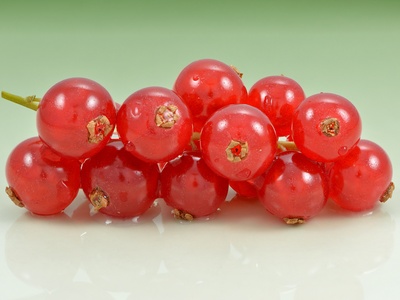
Red Currant
Small, tart, vibrant red berries (‘ribes rosso’) that grow in clusters. Cultivated in the Alpine regions, they are typically used to make sauces for game, jellies, and desserts.

White Currant
A translucent, jewel-like berry that is less tart than its red counterpart. Often grown in the northern mountain regions and used fresh in fruit salads, tarts, and jellies.

Gooseberry
Known as ‘uva spina’ (thorn grape), these tart berries are grown in cooler northern regions. They are not widely commercialized but are used locally for pies, crumbles, and preserves.

Tomato
Botanically a fruit and the heart of Italian cuisine. The San Marzano dell’Agro Sarnese-Nocerino DOP and Pomodoro di Pachino IGP are legendary for sauces and salads.

Avocado
A relatively new but increasingly successful crop in Southern Italy, especially Sicily. The warm climate allows for the cultivation of varieties like Hass, producing creamy, flavorful fruit.
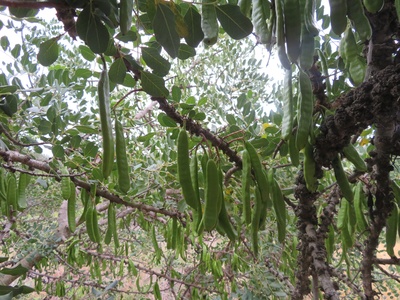
Carob
The pods of this Mediterranean tree (‘carruba’) contain a sweet pulp. Historically a famine food, its flour is now used as a chocolate substitute in health foods and traditional sweets.
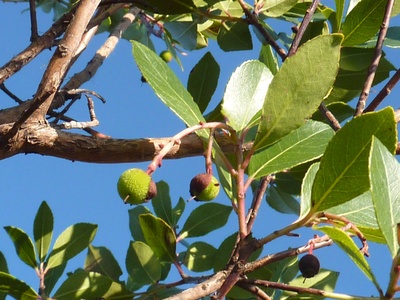
Strawberry Tree Fruit
The ‘corbezzolo’ fruit ripens in autumn, giving the tree flowers and fruit at the same time. The berry has a subtly sweet flavor and slightly grainy texture, used for jams and liqueurs.
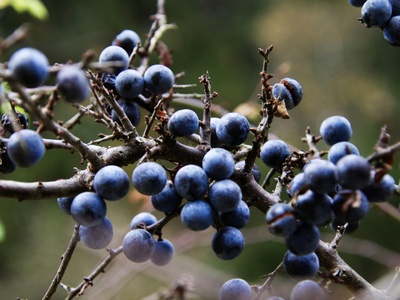
Sloe
The small, dark purple fruit of the blackthorn shrub. Incredibly astringent raw, they are harvested after the first frost to make traditional liqueurs like Bargnolino.

Rose Hip
The fruit of the wild dog-rose, rich in Vitamin C. After the first frost, they are harvested to make jams (‘marmellata di rosa canina’), syrups, and herbal teas.
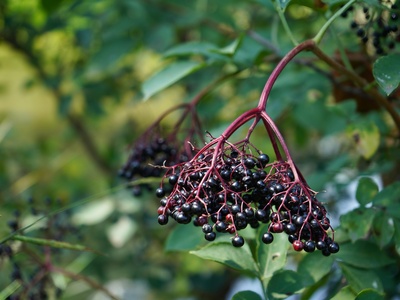
Elderberry
The dark purple berries (‘sambuco’) must be cooked to be edible. They are commonly used across Italy to make syrups for drinks, jellies, and traditional liqueurs.

Saturn Peach
Also known as ‘pesca tabacchiera’ or donut peach. This flat, aromatic peach has thin skin and sweet white flesh with very little acidity, making it a popular summer treat.
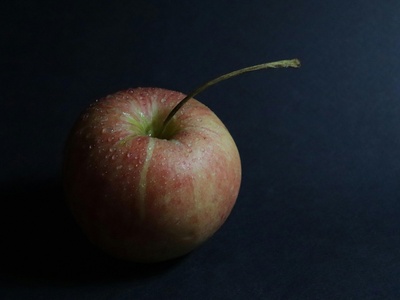
Annurca Apple
An ancient apple from Southern Italy, the Mela Annurca Campana IGP is unique. It’s small, crisp, and aromatic, traditionally reddened on the ground on beds of straw.

Azarole
A type of hawthorn known as ‘azzeruolo’ with larger, apple-like fruit. It has a pleasant, tart flavor and is eaten fresh or made into jellies and preserves in the regions where it’s found.

Service Tree Berry
An ancient fruit resembling a small pear, which must be over-ripened (‘bletted’) to become edible. It has a sweet, slightly grainy texture and is a rare, traditional food.
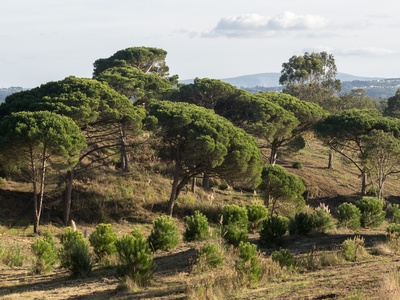
Italian Stone Pine
While the cone is not eaten, the seeds (‘pinoli’) are a prized harvest. Pinoli are a key ingredient in pesto alla genovese, as well as many Italian cookies and desserts.

Feijoa
This South American fruit is grown in some Italian gardens. It has a unique aromatic flavor, a mix of pineapple, guava, and strawberry. Eaten fresh by scooping out the pulp.
